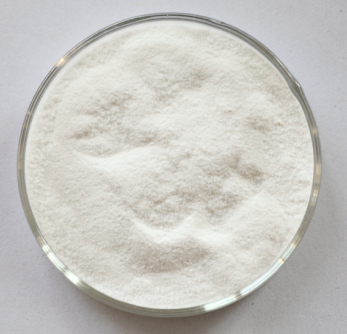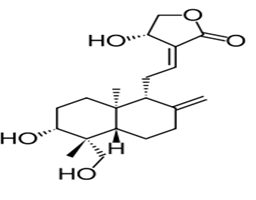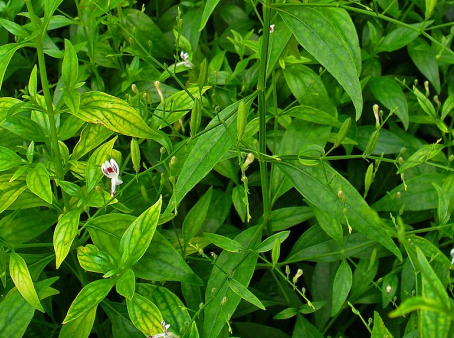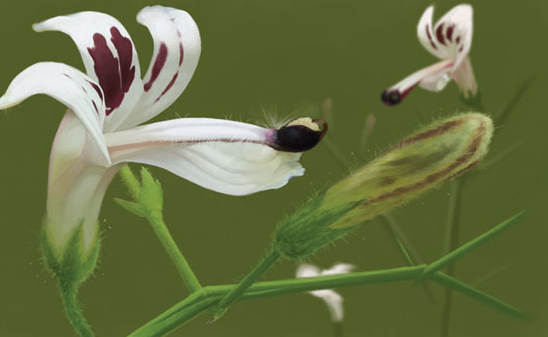Excellent quality for Andrographis Extract Factory from Paris
Excellent quality for Andrographis Extract Factory from Paris Detail:
[Latin Name] Andrographis paniculata(Burm.f.)Nees
[Plant Source] Whole herb
[Specification] Andrographolides 10%-98% HPLC
[Appearance] White powder
Plant Part Used: Herb
[Particle size] 80Mesh
[Loss on drying] ≤5.0%
[Heavy Metal] ≤10PPM
[Storage] Store in cool & dry area, keep away from the direct light and heat.
[Shelf life] 24 Months
[Package] Packed in paper-drums and two plastic-bags inside.
[Net weight] 25kgs/drum
[What is Andrographis?]
Andrographis paniculata is a bitter tasting annual plant, referred to as the “King of Bitters.” It has white-purple flowers and it is native to Asia and India where it has been valued for centuries for its numerous medicinal benefits. Over the past decade, andrographis has become popular in America where it is often used alone and in combination with other herbs for a variety of health purposes.
[How does it work?]
According to Memorial Sloan-Kettering Cancer Center, the active ingredient in andrographis is andrographolides. Due to the andrographolides, andrographis has potent anti-inflammatory and antimalarial properties. It also has antimicrobial properties, meaning it can help to fight off and prevent infections from harmful microorganisms such as viruses, bacteria and fungi. In addition, andrographis is a powerful antioxidant and it can help to prevent free radical induced damage to your cells and DNA
[Function]
Cold and Flu
Scientists have discovered that andrographis helps to boost the immune system by stimulating the body’s production of antibodies and macrophages, which are large white blood cells that scavenge harmful microorganisms. It is taken for both the prevention and treatment of the common cold, and it is often referred to as Indian echinacea. It might help lessen the severity of cold symptoms such as sleeplessness, fever, nasal drainage and sore throat.
Cancer, Viral Infections and Heart Health
Andrographis may also help to prevent and treat cancer, and preliminary studies done in test tubes found that extracts of andrographis help to treat stomach, skin, prostate and breast cancer. Due to the herb’s antiviral properties, andrographis is used to treat herpes and it is also currently being studied as a treatment for Aids and HIV as well. Andrographis also promotes heart health and can help to prevent the formation of blood clots as well as to dissolve already formed blood clots. In addition, the herb relaxes smooth muscles in the walls of blood vessels and thereby helps to reduce high blood pressure.
Additional Benefits
Andrographis is used to promote gallbladder and digestive health. It also helps to support and strengthen the liver and it is used in combination with other herbs in several Ayurvedic formulations to treat liver disorders. Finally, andrographis extracts taken orally have been found to help neutralize the poisonous effects of snake venom.
Dosage and Precautions
The therapeutic dose of andrographis is 400 mg, twice daily, for up to 10 days. Although andrographis is considered safe in humans, the NYU Langone Medical Center warns that animal studies suggest that it may impair fertility. Andrographis may cause unwanted side effects such as headaches, fatigue, allergic reactions, nausea, diarrhea, altered taste and pain in the lymph nodes. It may also interact with certain medications and as with any supplement you should consult your health care practitioner before taking the herb.
Product detail pictures:

Related Product Guide:
So as to provide you with ease and enlarge our business, we even have inspectors in QC Crew and guarantee you our best company and solution for Excellent quality for Andrographis Extract Factory from Paris , The product will supply to all over the world, such as: Madagascar, Sao Paulo, Benin, Thus far, our item associated with printer dtg a4 may be shown in most foreign nations as well as urban centers, which are sought after simply by targeted traffic. We all highly imagine that now we have now the full capacity to present you with contented merchandise. Desire to collect requests of your stuff and produce the long-term co-operation partnership. We very seriously promise:Csame top quality, better price; exact same selling price, higher quality.
Soybean Oil Press, Small Oil Press, Homemade Oil Press, Making Oil At Home
https://www.chinaoilpress.net/ E-mail: info@chinaoilpress.net
Our oil press can be used for various raw materials, such as peanuts, soybeans, rape seeds, cotton seeds, sesame seeds, sunflower seeds, jatropha seeds, canola seeds, coconut seeds, tea seeds and palm seeds. Gemco considers technological innovation as the cornerstone of its development. Our products not enjoy a solid reputation in the domestic market. Gemco has been honored with two awards: “National High Quality Well-known Goods” and “National Quality Guaranteed Goods”.
The oil press is characterized by its sophisticated design which is easy to operate. Gemco owns several national patents for its oil press technology. The quality of Gemco’s oil press system is of above the China’s national standard, and is CE certified.
Click below to find out where to buy the best natural Stevia:
https://www.madronemountain.com/Sugar Replacement Natural Stevia Sweetener
Green Leaf Stevia might help promote teeth’s health, helps curb cravings for carbs, tobacco, and alcoholic beverages consumption, and contains been proven to alleviate migraines. Eco-pleasant Leaf Stevia may help curb cravings to take fatty foods. Stevia may reduce your blood sugar levels and lower blood circulation pressure also. This makes it ideal for diabetics amazingly.
The initial known organic sweetener whose extract might be used as nutritional supplement could be the stevia plant. Its origin will undoubtedly be in SOUTH United states where it is used as a sweetener because therefore numerous centuries. The swiss botanist Moises Giacomo Bertoni discovered it in 1887. It is up to 300 events sweeter than sugars really. In the 1950′s the original cultivation experiments were created, and from 1970 on, stevia has been grown in excellent amounts in Japan. In European countries it really still is unapproved, because of conditions that steviol, a breakdown item of the principal component stevioside, will undoubtedly be mutagenic. In the scholarly studies which affirm this thesis, rats obtained a 1 / 2 of these bodyweight in stevia simply leaves. If an individual would eat 1 / 2 of his bodyweight in sugars, it wouldn’t become really healthy neither. And this study seems pretty untenable along with the long lasting using stevia in SOUTH United states and Japan minus the incidents demonstrates stevia will be safe. Additionally, there are several scholarly studies that state that it has numerous positive side effects. But probably the sugar has a finger industry in the pie here again. Used as a sweetener and medicine for one thousand many years by indigenous Guarani Indians, Today stevia Rebaudiana may be really the only known plant to get worried the sweetener business. Stevia leaves contain steviosides, which are chemical compounds that trigger Stevia to taste sweet fairly. Stevia will undoubtedly be 200-300 occasions sweeter than white-colored sugars.
Many of the statements actually got o the extent that natural material is from the era of malignancy. The researchers declare that steviol can convert to a malignancy generating compound quickly. It’s understandable that the scientist are often divided with this particular issue and extra study is essential before a company declaration is produced to resolve the question. Although a number of scientific studies have been undertaken there is still no positive evidence that natural sweetener is actually a danger to your wellbeing. In britain of Japan this herb provides been ideal for thirty a long time as a sweeten no conclusive proof has been as long as is offers any kind of adverse outcomes upon the body. Nevertheless the FDA firmly facilitates the premise that Stevia is definitely an unsafe foods additive and for their governmental positioning all Stevia importation as a foods additive was already banned in America.
Unfortunately it really isn’t the scientific proof that is being considered here but rather the political clout of the sugars industry that is presently pushing this ban. Stevia is actually a natural item and the sugar companies cannot get yourself a patent onto it therefore, preventing the larger corporations from cashing in on its use and advantages. It is certainly a danger to the sugars company’s long term at greatest.
For more information on Natural Stevia Sweetener Health Benefits for Diabetics Go to this webpage:
https://www.madronemountain.com/natural-sweeteners/stevia/stevia-side-effects-and-warnings
This article is also related to: stevia, stevia sugar, stevia side effects, stevia in the raw, is stevia safe, stevia plant, what is stevia, stevia extract, stevia sweetener, liquid stevia
The quality of the products is very good, especially in the details, can be seen that the company work actively to satisfy customer's interest, a nice supplier.









